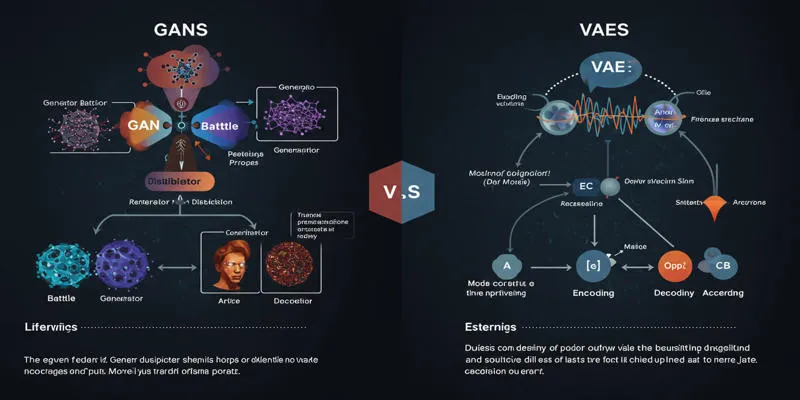Globally, machine learning is revolutionizing industries, and two often-used programming languages in this field are JavaScript and Python. Both languages boast robust libraries for developing intelligent applications, leading to ongoing debates among developers about which one performs better. Data scientists and artificial intelligence (AI) researchers often favor Python due to its extensive libraries and straightforward syntax.
Conversely, JavaScript is rapidly gaining traction in machine learning, primarily because it can run directly in the browser, offering users easier access. In this article, we will examine the performance of Python and JavaScript, focusing on speed, usability, adaptability, and support to help you make an informed decision. Let’s explore which language is more appropriate for your machine learning projects.

Why is Python Popular for Machine Learning?
Python’s rising popularity in machine learning is due to its simplicity and ease of use. With powerful libraries such as TensorFlow and Scikit-learn, Python simplifies machine learning tasks. It is flexible, supporting data visualization, natural language processing, and deep learning. A significant advantage is its sizable developer community, which provides an array of tools and continuous support. Python’s compatibility with Jupyter Notebooks enables rapid testing and prototyping.
Libraries such as Pandas and NumPy streamline data analysis, making Python a favorite among leading corporations and academic institutions for AI research. It accelerates the development of machine learning models, and its clear syntax makes it accessible, even to beginners. Python is widely used in online courses and publications to teach AI, making it available to learners of all levels.
What Makes JavaScript Useful in Machine Learning?
JavaScript’s ability to run directly in the browser without additional software makes it increasingly valuable for machine learning. Libraries like TensorFlow.js and Brain.js allow developers to integrate machine learning models directly into web applications. JavaScript is ideal for creating interactive, web-based ML applications that provide real-time user feedback. With Node.js, it performs efficiently on both the client and server sides, offering developers the flexibility to build a wide array of applications.
JavaScript’s key advantage is delivering instantaneous results to users without waiting for backend processes. There is no need for complex server setups or hefty software installations. TensorFlow.js enables model execution and training in the browser from anywhere. JavaScript is a popular choice for machine learning projects because it is embraced by millions of web developers, is compatible with all systems, and is easy to install.
Performance Comparison: Key Factors
Let’s compare the performance of Python and JavaScript based on speed, memory usage, GPU utilization, and real-time execution.
Training Speed
Python generally outperforms JavaScript in training large models, leveraging optimized libraries often written in C or C++. It offers GPU acceleration, significantly reducing training time, especially for deep learning tasks. In contrast, JavaScript takes longer to train complex models, with browser hardware limitations slowing down the process. While Node.js speeds up training, it still lags behind Python. For demanding training tasks, Python is the preferred tool, whereas JavaScript suits smaller, simpler models where training speed is less critical.
Memory Usage and Optimization
Python efficiently manages memory with libraries like Pandas and NumPy, designed for handling large datasets and performing computations. Its stable memory management makes Python reliable for substantial machine learning projects. JavaScript, however, faces challenges with browser memory limitations and may crash with large datasets or complex models. Although Node.js performs faster, it consumes more memory than Python. For enterprise- level machine learning tasks, Python’s superior memory optimization is recommended, especially for large datasets or intricate models.
GPU Acceleration Support
Python offers robust GPU support essential for deep learning projects, with libraries like TensorFlow, PyTorch, and CUDA fully utilizing GPUs to accelerate training. It also supports multiple GPUs, enhancing performance further. JavaScript, through TensorFlow.js, has limited GPU support, resulting in less efficient processing in the browser. While JavaScript’s GPU capabilities are evolving, Python remains the best choice for large models and intensive computations, thanks to its comprehensive GPU acceleration.

Model Execution Time
Python provides faster execution times for trained models due to its compiled backends, making it ideal for handling complex models and large datasets. It excels in batch processing and is preferred for machine learning applications requiring efficient data handling. In contrast, JavaScript executes models more slowly, especially for challenging tasks. While JavaScript applications load quickly in browsers, execution can be sluggish. JavaScript is suitable for smaller models or simpler predictions, but Python is recommended for extensive processing and applications that require fast execution.
Latency in Real-time Applications
For real-time machine learning, JavaScript offers low latency, making it perfect for web-based projects like live demos and image detection. It allows users to interact with models seamlessly and receive instant results. Python, in real-time applications, tends to increase latency due to server-side processing needs, making it less suitable for live user interactions. While JavaScript excels in scenarios demanding low latency and real-time speed, Python is better suited for backend processing and complex tasks, making JavaScript the best tool for real-time applications.
Conclusion:
Both JavaScript and Python have distinct strengths in machine learning. Python is optimal for large-scale, complex models, offering superior memory usage, GPU acceleration, and a wealth of libraries. It’s a top choice for deep learning due to its extensive use in AI research and development. Meanwhile, JavaScript excels in interactive web-based ML projects and real-time applications, with a key advantage being its ability to execute models directly in the browser without additional configuration. Choosing the right language depends on your project’s specific needs; each offers unique benefits tailored to particular machine learning tasks.
 zfn9
zfn9






















